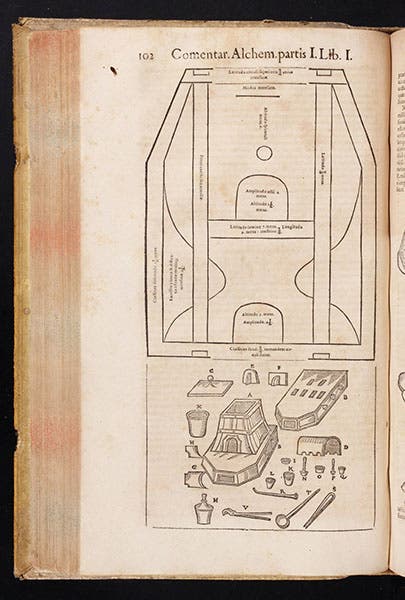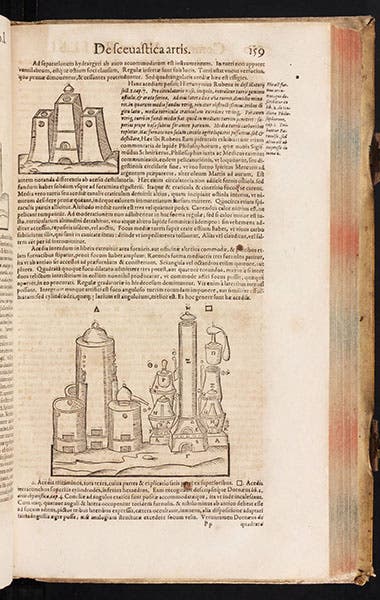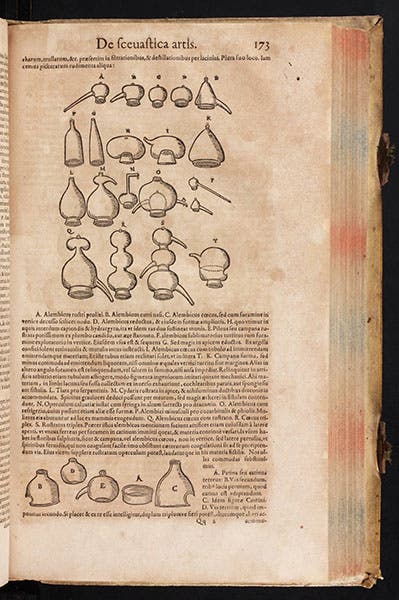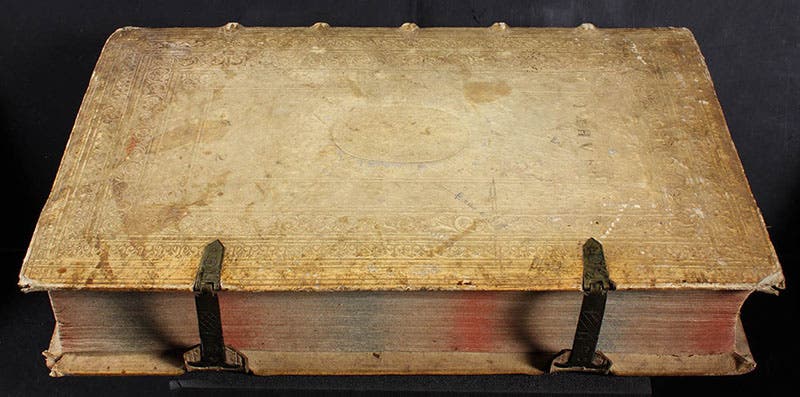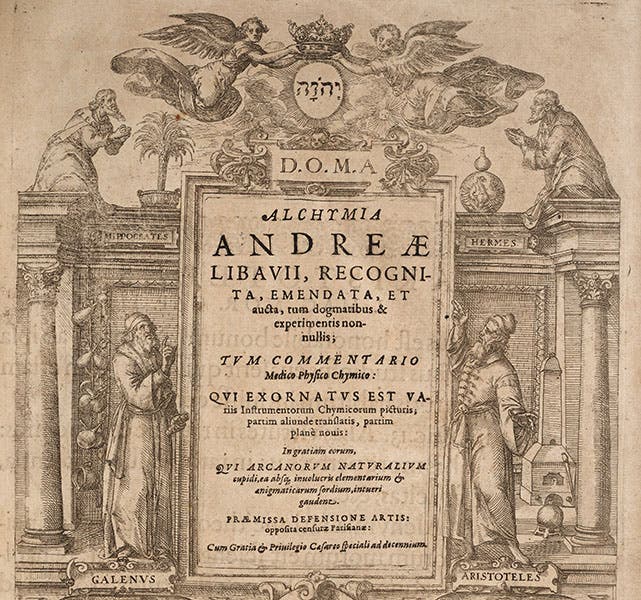Scientist of the Day - Andreas Libavius
Andreas Libavius, a German chemist, died July 25, 1616, at about 56 years of age; his date of birth is unknown. In 1597, Libavius published a book, Alchymia, that, in spite of its title, is seen by many modern chemists as the foundation book of their discipline. Libavius at the time preferred the word “alchemy” to “chemistry” because the latter word had been co-opted by followers of Paracelsus and was a mystical, magical art practiced in secrecy, mostly at the courts of such rulers as Rudolf II. Libavius wanted chemistry to be an academic and a laboratory discipline, divorced from astrology and natural magic, and concerned only with the nature of matter and its combinations, and he wanted it taught openly in the universities, not hidden away at royal courts. Libavius was none too pleased when the first professorship of chemistry was finally established at Marburg in 1609, because the professor appointed was Johannes Hartmann, a Paracelsian and a favorite at the court of Moritz of Hesse. But Libavius’s attitude did ultimately win the day, and although his word “alchymia” was replaced by “chemiatria”, everything else he argued for came to pass, as chemistry came to be established as an open empirical science, based on observations and experiments accessible to every practitioner. We have five of Libavius’s original works in the History of Science Collection, including 1st and 2nd editions of his Alchymia.
We have been advised by Libavian scholars that we go too far if we try to make Libavius into the first chemist. Libavius was a firm supporter of many alchemical pursuits; he believed in the possibility of a universal elixir, produced by repeated distillation, that could cure all human ills, and he thought it was certainly possible to produce gold, or any other metal, in the laboratory. As with Paracelsus, he embraced the notion that the best medical treatments were alchemical rather than herbal. But he emphatically rejected alchemical secrecy, and he did advocate the establishment of alchemical laboratories, stocked with all the necessary equipment, at universities and gymnasia, and this at a time when scientific laboratories as we understand them did not exist in any discipline.
The first edition of the Alchymia is unillustrated, but the second edition has an 85-page section that is crammed with woodcuts illustrating plans for laboratories, designs for furnaces, examples of alembics and distillation set-ups of all kinds, and even one woodcut that shows an alchemist at work, possibly Libavius himself, smelting tin (first image). We include a small assortment of some of these illustrated pages in this post (second, third, and fourth images).
The Alchymia of 1606 reminds one of Georg Agricola’s De re metallica (1556) in its abundance of woodcuts, only here they addressed to alchemists, rather than mining engineers. Our copy is an especially handsome specimen, with its stamped vellum boards still held closed by a beautiful pair of bronze clasps (fifth image). It is available online.
The woodcut title page to the Alchymia of 1606 shows another difference between Libavius and Paracelsus – Paracelsus rejected the authority of ancients such as Galen and Aristotle, while Libavius embraced them as the founders of his science.
We show just the top half of the title page, where you may see figures representing Hippocrates, Hermes Trismegistus, Aristotle, and Galen (sixth image). Libavius liked this title page so well that he reused it for his Syntagma (1611-13), published five years later. We have a copy of this in our collection as well.
Dr. William B. Ashworth, Jr., Consultant for the History of Science, Linda Hall Library and Associate Professor, Department of History, University of Missouri-Kansas City. Comments or corrections are welcome; please direct to ashworthw@umkc.edu.


